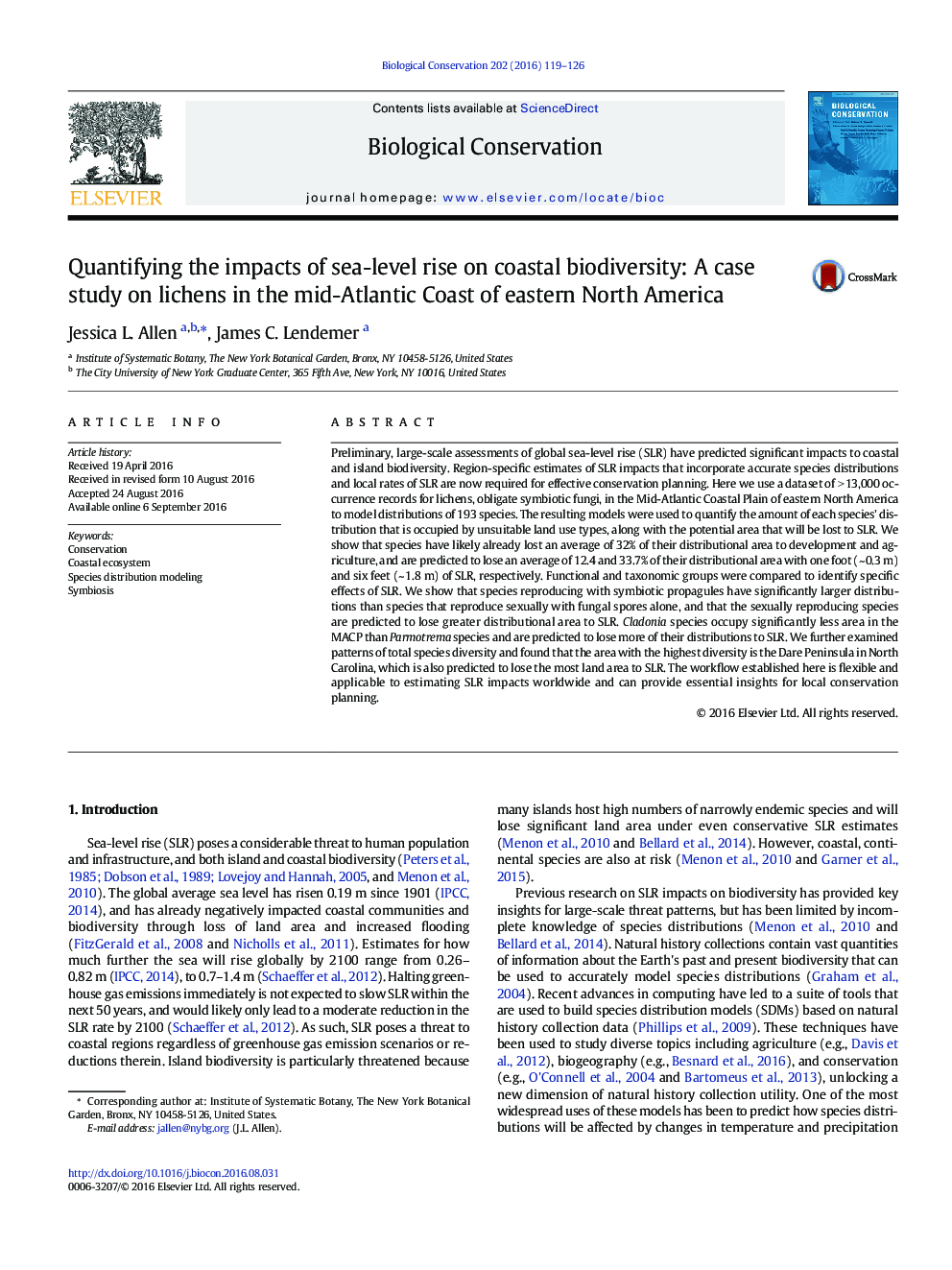| کد مقاله | کد نشریه | سال انتشار | مقاله انگلیسی | نسخه تمام متن |
|---|---|---|---|---|
| 6298139 | 1617899 | 2016 | 8 صفحه PDF | دانلود رایگان |
عنوان انگلیسی مقاله ISI
Quantifying the impacts of sea-level rise on coastal biodiversity: A case study on lichens in the mid-Atlantic Coast of eastern North America
دانلود مقاله + سفارش ترجمه
دانلود مقاله ISI انگلیسی
رایگان برای ایرانیان
کلمات کلیدی
موضوعات مرتبط
علوم زیستی و بیوفناوری
علوم کشاورزی و بیولوژیک
بوم شناسی، تکامل، رفتار و سامانه شناسی
پیش نمایش صفحه اول مقاله

چکیده انگلیسی
Preliminary, large-scale assessments of global sea-level rise (SLR) have predicted significant impacts to coastal and island biodiversity. Region-specific estimates of SLR impacts that incorporate accurate species distributions and local rates of SLR are now required for effective conservation planning. Here we use a dataset of >Â 13,000 occurrence records for lichens, obligate symbiotic fungi, in the Mid-Atlantic Coastal Plain of eastern North America to model distributions of 193 species. The resulting models were used to quantify the amount of each species' distribution that is occupied by unsuitable land use types, along with the potential area that will be lost to SLR. We show that species have likely already lost an average of 32% of their distributional area to development and agriculture, and are predicted to lose an average of 12.4 and 33.7% of their distributional area with one foot (~Â 0.3Â m) and six feet (~Â 1.8Â m) of SLR, respectively. Functional and taxonomic groups were compared to identify specific effects of SLR. We show that species reproducing with symbiotic propagules have significantly larger distributions than species that reproduce sexually with fungal spores alone, and that the sexually reproducing species are predicted to lose greater distributional area to SLR. Cladonia species occupy significantly less area in the MACP than Parmotrema species and are predicted to lose more of their distributions to SLR. We further examined patterns of total species diversity and found that the area with the highest diversity is the Dare Peninsula in North Carolina, which is also predicted to lose the most land area to SLR. The workflow established here is flexible and applicable to estimating SLR impacts worldwide and can provide essential insights for local conservation planning.
ناشر
Database: Elsevier - ScienceDirect (ساینس دایرکت)
Journal: Biological Conservation - Volume 202, October 2016, Pages 119-126
Journal: Biological Conservation - Volume 202, October 2016, Pages 119-126
نویسندگان
Jessica L. Allen, James C. Lendemer,